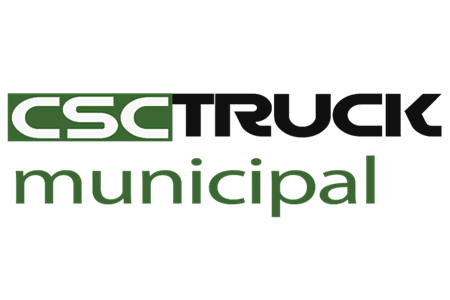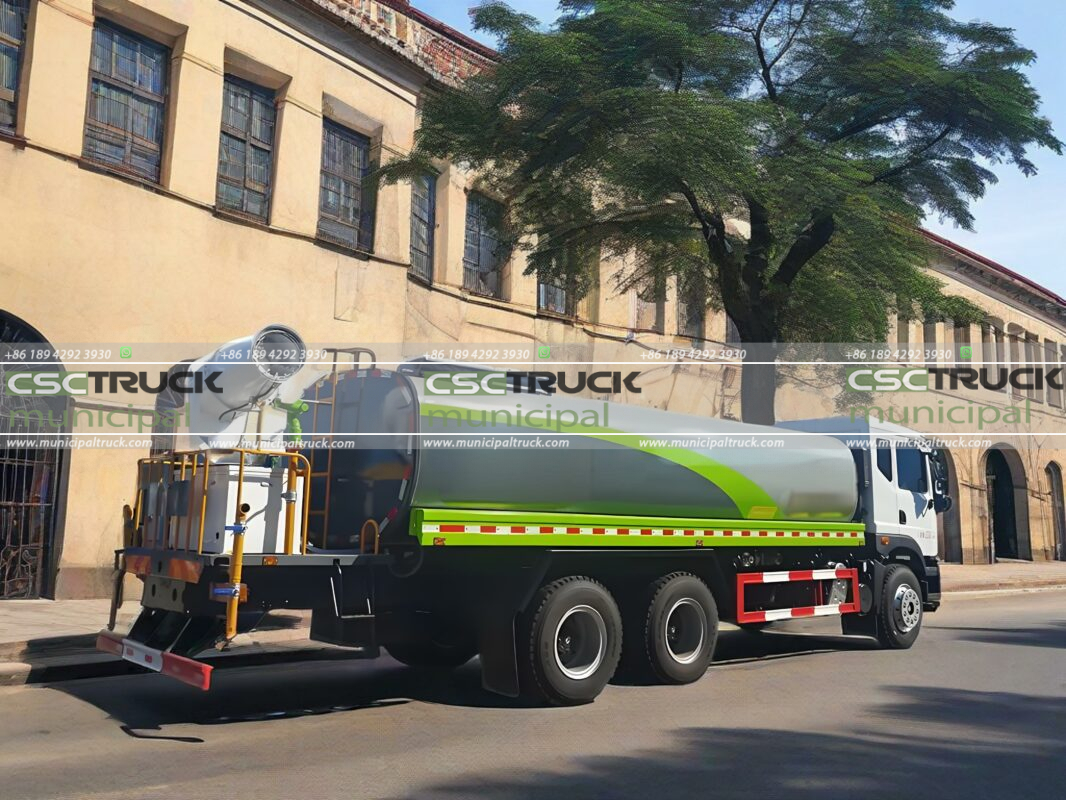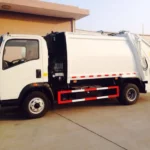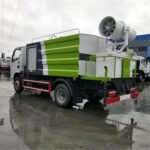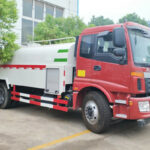In a landmark investment for urban livability, Angola’s Ministry of Urban Affairs and Environment today commissioned 10 multi-function water spray trucks across Luanda’s strategic green corridors. This $3.8 million deployment—executed through a technical partnership between CSCTRUCK Municipal Branch and Angolan environmental infrastructure leader EnviroAngola Lda.—introduces adaptive irrigation, dust suppression, and microclimate management capabilities to revitalize 1,200 hectares of public parks suffering from degraded soils and chronic water stress. The vehicles will operate within a precision resource-management framework, optimizing Luanda’s limited freshwater reserves while reducing particulate pollution by 50% in targeted recreational zones.
Luanda’s Ecological Challenge – Urban Greening in a Semi-Arid Metropolis
Accelerating desertification and population density threaten Luanda’s vital green lungs, necessitating engineered solutions for sustainable urban ecology.
- Water Scarcity and Soil Degradation:
Luanda receives just 320mm annual rainfall, forcing reliance on desalinated water costing $2.3/m³ for park irrigation. Independent studies confirm 78% of topsoil in historical parks like Parque da Independência has lost organic matter through wind erosion, reducing water retention capacity by 65% since 2015. Traditional sprinkler systems waste 40% of water through evaporation, while compacted soils trigger urban flooding during rare storms. - Thermal Stress and Biodiversity Collapse:
Canopy temperatures in Miradouro da Lua park exceed 47°C during summer afternoons—8°C warmer than adjacent built areas—due to diminished evapotranspiration. Endemic acacia and baobab species show 90% seedling mortality rates, while airborne dust from barren park peripheries contributes to Luanda’s PM10 concentrations averaging 85 µg/m³ during dry seasons.
Technical Integration – The Hydro-Engineering Ecosystem
CSCTRUCK’s MWP-7 trucks incorporate four synchronized subsystems, enabling multi-vector environmental management within a single platform.
Adaptive Fluid Deployment Matrix
- Variable-Droplet Aerosol System:
Quadrant-specific nozzles electronically modulate droplet size from 50–500 microns, selecting optimal spectra for tasks ranging from dust coagulation (coarse spray) to foliar hydration (fine mist). Ultrasonic humidity sensors automatically suspend irrigation when ambient moisture exceeds 65%, conserving an estimated 11,000 liters daily across the fleet. - Soil Penetration Enhancement Module:
Pressurized sub-surface injection wands penetrate 30cm into compacted earth, delivering hydrogel-enriched water directly to root zones. This increases moisture retention by 300% while eliminating surface runoff, with integrated tensiometers terminating flow when soil saturation reaches predetermined thresholds based on botanical requirements. - Phytosanitary Application System:
Dual 200-liter tanks enable simultaneous irrigation and precision delivery of mycorrhizal fungi suspensions or biodegradable pesticides. Selective application within 2cm accuracy prevents chemical drift into adjacent water bodies, critical for safeguarding the Mussulo Lagoon ecosystem bordering coastal parks.
Deployment Strategy and Operational Synergies
The program integrates water trucks within a data-driven urban management framework targeting maximal ecological restoration impact.
- Microclimate-Optimized Scheduling:
Operations synchronize with hyperlocal weather predictions and park visitation patterns: pre-dawn irrigation cycles leverage 4AM humidity peaks to minimize evaporation, while midday dust suppression activates automatically when wind speeds exceed 15km/h at IoT-enabled monitoring stations. Dynamic routing prioritizes zones with soil moisture deficits >25% below sustainability thresholds. - CSCTRUCK-EnviroAngola Technical Alliance:
Under a $12 million 8-year performance contract, CSCTRUCK Municipal Branch provides satellite-based soil health analytics and remote diagnostics, while EnviroAngola maintains 24/7 operational readiness through its Viana Industrial Hub. Angolan engineers completed specialized training at CSCTRUCK’s Dubai Arid Zone Technology Center, mastering semi-arid landscape hydration protocols.
Integrated Urban Ecosystem Management
The spray trucks anchor a coordinated municipal effort to enhance Luanda’s environmental resilience through cross-functional asset integration.
- Water Resource Stewardship:
All vehicles utilize Luanda’s tertiary-treated wastewater, filtered onboard to 5-micron purity through solar-powered reverse osmosis membranes. Real-time consumption telemetry integrates with the National Water Directorate’s allocation system, ensuring park usage never exceeds 15% of the city’s non-potable water budget despite expanding green infrastructure. - Holistic Municipal Fleet Coordination:
The multi-function sprayers operate as the hydrological management layer within Luanda’s environmental vehicle matrix: During nighttime operations, compact sweeper truck units remove windblown debris from park pathways, while odor-sealed garbage truck variants collect organic waste from perimeter receptacles before anaerobic decomposition generates methane. This integrated approach replaces six disparate municipal contracts, projecting 30% operational savings while establishing 72 new urban forestry jobs by 2026.
Angola’s strategic deployment pioneers climate-adaptive urban greening for rapidly expanding African megacities, transforming municipal service vehicles from single-purpose tools into integrated ecological restoration platforms through international technical collaboration and sensor-driven resource governance.
